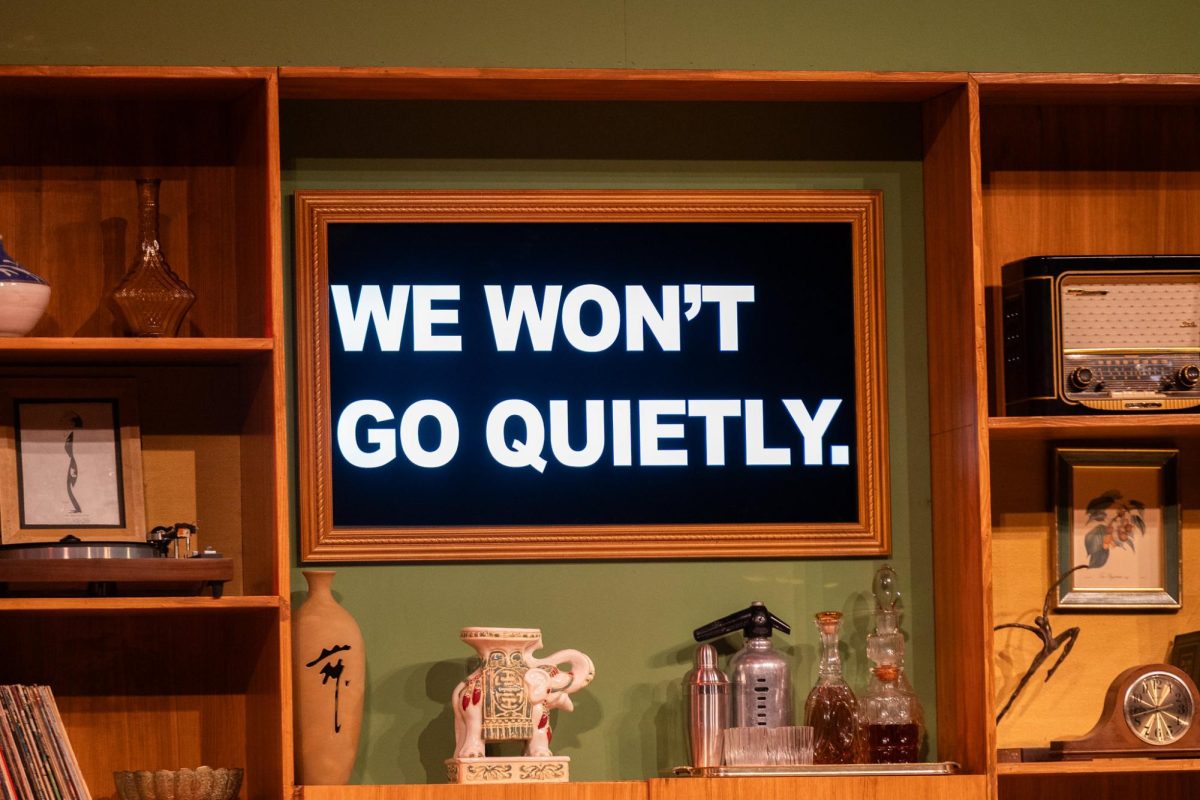facebook.com
Reza Farazmand is set to speak at a book signing on Oct 26 at Sonoma State.
Poorly drawn lines and sketches are typically found on the backs of high school and college notebooks, brought to existence during long and boring class lectures; however, Reza Farazmand’s poorly drawn lines brought him a future and an opportunity to bring his doodles to life. He was able to create a voice for his art through what has now become successfully known as his comic series, “Poorly Drawn Lines.”
On Oct. 6 Farazmand’s first comic book was released, aptly titled “Poorly Drawn Lines,” which made The New York Times Bestsellers list. His new book is a compilation of new comics as well as short essays and stories, and includes some old comic strips as well.
Farazmand got his start at Redwood High School in Marin County where he wrote for his school newspaper, where he discovered his love and knack for writing and illustrating comics. This was where Poorly Drawn Lines was born before later evolving into the bestseller it is today.
“I chose that name from the first comic strip that I did for my high school newspaper, it was called ‘Teacher Teacher,’ and I was really, really bad at drawing back then. I’ve gotten better but I was also really into pointing out how bad I was at drawing,” Farazmand said. “I had one comic that was a teacher labeled with a bunch of things making fun of teachers. One of the labels coming off from one of the teachers was ‘poorly drawn lines’ which was referential, making fun of my poorly drawn lines, and that was something that just kind of stuck with me.”
Farazmand later brought his poorly drawn lines to UCSD where he continued to produce his comics under the same name.
As an eager, young comic writer, Farazmand was an avid reader of series such as “Pearls Before Swine,” “The Sunday Comic,” “Dilbert” and a comic called “Life in Hell” created by Matt Groening, who also is known for creating the television series “Futurama” and “The Simpsons.”
“It was really what inspired me to draw satirical cartoons,” Farazmand said.
When asked what his comics revealed about himself as a person, he said, “I don’t take a lot of things very seriously. Life is better viewed through a satirical eye, and everything is worth being made fun of.”
Farazmand doesn’t write just to write. Through his comics, Farazmand said“I wish to make people laugh, to make them think, and to entertain people. I also want to express all my weird wacky ideas on paper and bring them into the real world. And money would be nice. I would like to accomplish money,” he joked.
After climbing to The New York Bestsellers list, what’s next for 27-year-old Farazmand?
“Animation has always been the next logical step as a cartoonist. It’s the next step you take for your work,” said Farazmand. “I’ve always had ideas of running a T.V. pilot or bringing it to a Hollywood agent, but I’m not thinking seriously about any of that right now. I’m more focused on literature. I really loved the process of writing this book and I would love to do a follow up.”
Recognition can be great validation for an artist, so naturally, witnessing one’s work become recognized as a New York Times Bestseller is incredibly encouraging and exciting.
“I thought about doing a longer form graphic novel or another collection of comics, but I’m definitely in book mode right now. The process of writing and creating a book was really cool. I get to go places as an artist and get to push the boundaries on how much work I can produce in a short period,” Farazmand said. “So I’m kind of addicted to it.”
Farazmand expressed his excitement about visiting Sonoma State to speak and interact with students. “I’m excited to come meet people who have read my work or haven’t. Hopefully I can shake some hands and convert people to ‘poorly drawnline-ism.’”
He has a lot of knowledge and advice to share for young starting artists. “Consistency is very important if you’re trying to get noticed as an artist on the internet, as a cartoonist or as a comedy writer. You have to consistently produce a lot of work if you want to get noticed as an artist on the internet,” said Farazmand. “That should not only put you on people’s radar and keep their awareness of you high, it also lets you practice and develop your voice, the more work you produce.”
He’ll be speaking and holding a book signing at Sonoma State on Oct. 26 in Ballrooms B and C of the Student Center at 7 p.m.



































